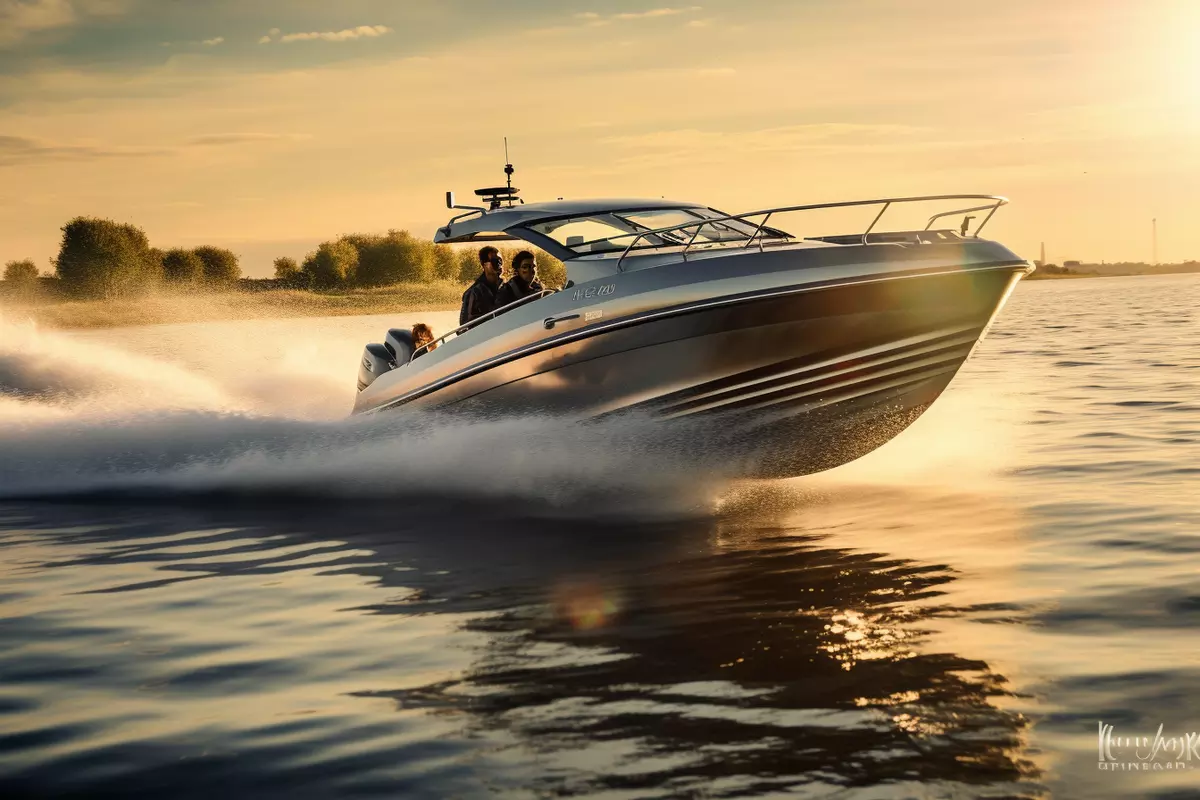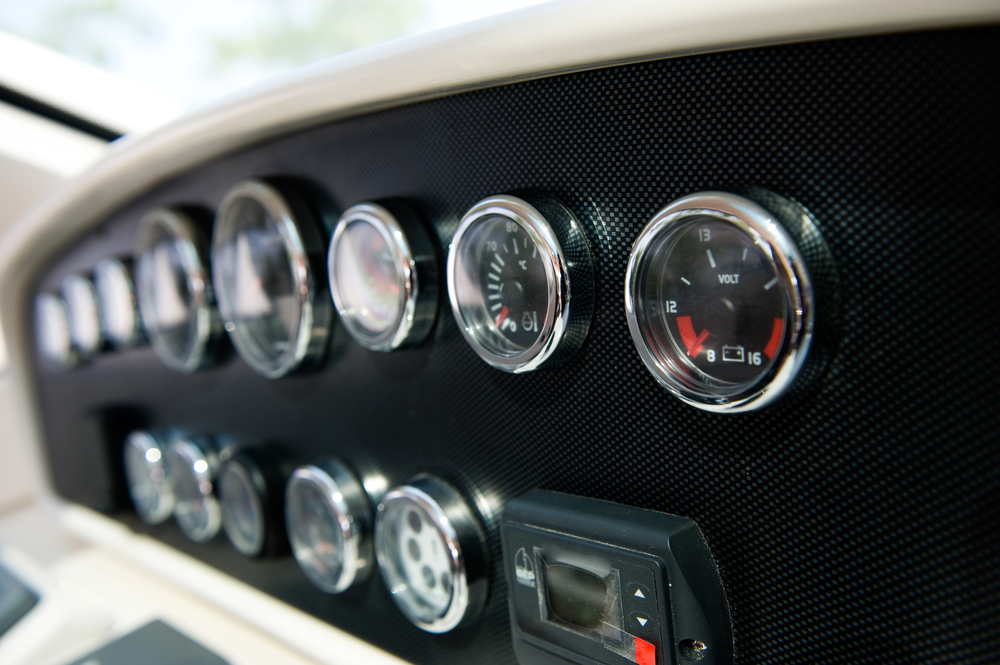5 min read
How Fast Does a Boat Go? (Including Speed By Boat Type Chart!)
Explore boat speeds across types with our chart! Learn how factors like design & horsepower impact speed, from sailboats at 8 mph to jet boats over 200 mph.

Whether using your boat for transportation or recreation, you need to know how to use it properly. Part of your responsibility is knowing how fast a boat can go so you stay within its limits. The type of boat will influence its speed, but there are average speeds you can consider when looking for a new vessel.
The average speed of a recreational boat is between 10 and 40 miles per hour. Jet-powered boats and racing boats can surpass 200 miles per hour, with the fastest boat on record going 317 mph. A sailboat averages 8 mph, a yacht 50 mph, and a pontoon 22 mph. Many factors influence a boat’s speed.
Depending on your boat’s design and weight, the engine, water temperature and depth, and the wind, boat speed can vary. Understanding the average speed of various boats is a good starting point for finding the right watercraft for you.
What Are the Average Speeds for Different Types of Boats?

You can average 8 miles per hour on a sailboat or reach top speeds of 200+ miles per hour on certain racing boats. Therefore, the type of boat has a significant impact on how fast it will go. But most recreational-style boats go between 10 and 40 miles per hour.
When operating a boat, it's wise to know the average speed as well as the max speed. Of course, regardless of how fast your boat can go, always make sure to abide by any local laws, limits, and restrictions.
Average Speeds of Boats
Here is a glimpse at the average and top speeds of various popular boat categories. Keep in mind that these figures are a rough average since different boat models within each category can have some drastic differences in speed. This difference exists because of things like engine horsepower, hull shape, boat weight, and more.
How Many Miles Per Hour Is One Knot?
One mile per hour is equivalent to 0.869 knots. This conversion is essential to know since many boats will use knots to describe their speed. In some places, boating speed limits might also use knots.
If you find a boat that claims to reach top speeds of 50 knots, it can go about 57 to 58 miles per hour. If you're near a no-wake zone, you typically can't go more than 5 miles per hour or 4.3 knots.
Is 50 MPH Fast for a Boat?

Smaller boats and those with open helms will feel very fast at 50 miles per hour. But high-speed crafts, larger boats, or closed vessels may feel slow at 50 mph.
Compared to a sailboat gliding along at 10 mph, 50 can feel super speedy. But you'd likely feel like you're grounded in the slow lane next to a racing boat zipping by at 120 mph. Regardless, 50 mph is still fast when you think about the overall picture.
You're still covering quite a bit of distance in a very short period of time. It's important to keep this in mind to account for your reaction time and any obstacles that might appear in the water.
Can Boats Go 100 MPH?
There are speed boats that can go 100 mph, high-speed racing boats that go 180 mph, and jet boats that top 200. But 100 miles per hour is fast, so you’d likely go these speeds with racing boats. Recreational boats don’t go this fast.
How Fast Is the Fastest Boat?
Currently, the fastest boat on record is a jet-powered hydroplane called The Spirit of Australia at 317 miles per hour. Ken Warby's boat reached 317.58 miles per hour in 1978 on Blowering Dam Lake in New South Wales.
However, this was just the official fastest speed. It's actually estimated that the craft reached almost 345 miles per hour almost one year earlier. Warby and his son have since designed and constructed The Spirit of Australia II with the hopes of one day surpassing the record.
How Fast Do Recreational Boats Go?

Recreational boats average between 10 and 40 miles per hour, depending on the style. A sailboat typically has a cruising speed of about 7 to 8 miles per hour. Racing sailboats can reach speeds up to 17 mph.
Smaller fishing boats, like bass boats, can go 30 to 50 miles per hour, while larger trawlers top out at around 23 mph. Ski boats go between 18 and 36 miles per hour.
Most motorboats reach max speeds of 90 to 100 mph. However, you can also find motorboats with powerful engines that can surpass 200 miles per hour.
What Is the Average Fishing Boat Speed?
Fishing boat speeds average about 30 miles per hour, with many going about 7 mph and some reaching 80 mph. It’s hard to pinpoint one average speed for a fishing boat since you can find many types.
The speed of your fishing boat will also depend highly on the power of your motor. Therefore, when shopping for a fishing boat, decide where you will use it most and how. Then you can determine the top speeds you’ll need to reach and how much horsepower you’ll need.
What Factors Can Affect a Boat’s Speed?

A boat’s design and weight, water depth and temperature, the wind, and your boat’s engine all affect the speed. If you want to determine how fast your boat can go, these are the factors you need to consider.
Design
Typically, the longer the boat, the faster it will go. Also, if the hull moves on the water (a planing hull) instead of pushing it away, the boat will go faster.
If instead, your boat has a monohull, it will push more water away as it goes, causing it to move slower. This slower speed is because when the hull has more contact with water, it increases friction. The increased friction is what makes the boat move at a slower speed.
If the hull has a round, flat bottom, it will move at slower speeds. Many boats with this shape hull are pontoons, sailboats, and fishing boats.
However, boats with v-shaped hulls move on top of the water and reach higher speeds. You’ll find this hull shape on many racing boats.
The Boat’s Weight
The heavier the boat, the more friction between the water and the boat’s hull, leading to a slower speed. A boat displaces the water around it, usually as much as the boat weighs. In other words, if your boat weighs 1,500 pounds, it will displace 1,500 pounds of water.
To put it another way, your boat has an extra 1,500 pounds in water it must move as it goes. When you consider it this way, you can see why heavier boats will move at slower speeds.
Water Depth
Your boat will go slower in shallow water because of reduced pressure beneath the vessel. The water under the boat moves faster in shallow water, and your boat will need to work harder to push it away.
Additionally, your boat will need to displace more water to stay afloat. Therefore, this increases the friction, which means slower speeds.
Type of Engine
The more horsepower your engine has, the faster your boat will go. It’s reasonable to consider a more powerful motor will allow your boat to travel at faster speeds.
When you combine the engine power with the boat weight, you can start to get a clearer picture of your boat’s speed. For example, a 5,000-pound boat might go about 25 to 26 mph with a 150-hp engine.
However, that same engine could move a lightweight racer up to 80 miles per hour. An engine with 50 hp might not seem super powerful. But on a lightweight craft, it can move along nicely. However, you might feel like you’re barely moving on a heavier boat.
A 2,000-pound racing boat with a 300-hp engine can go about 81 mph, while a 1,000-pound racer goes 115 mph. Put that same 300-hp engine on a 5,000-pound cruiser, and it will only go about 36 mph.
Temperature of the Water
Boats tend to go faster in warmer water and slower in colder water. Colder water temperatures tend to be denser.
Denser water consists of thicker water molecules, which increases the friction between the water and the hull. Once again, this increased friction means slower speeds for your boat.
Wind
The wind can influence your boat’s speed by making it faster or slower depending on which way it’s blowing. If there is less wind resistance, your boat will move more quickly. Increased wind resistance can slow you down, especially if you are in a sailboat.
How Do You Calculate Your Boat’s Average Speed?

To calculate your boat’s average speed, you need to know the horsepower, displacement, and Crouch’s constant. Crouch’s constant depends on the type of boat. Most recreational boats have a Crouch constant of 150.
Higher speed boats have a Crouch constant of 190 and racing boats 230. For displacement, use your boat’s weight. (As mentioned before, the amount of water your boat displaces is equal to the boat’s weight.)
Once you have this information, use this formula:
Speed = sqrt of (horsepower/displacement) X Crouch Constant
Here’s how you can determine the average speed of a 2,200-pound pontoon boat with a 50-hp engine.
Sqrt of (50/2,200) x 150 = 22.61
Of course, if you’re already out on the water, you can simply glance at your boat’s GPS to see what your speed is. You can also get an average speed by considering how fast your boat goes most of the time.
For example, assume most of the time you travel between 20 and 30 miles per hour on your boat. Add these two numbers, divide by two, and you’ll have your average speed.
20 + 30=50/2=25 mph
What Horsepower Do You Need To Go A Certain Speed In A Boat?
You can determine the necessary horsepower using Crouch’s constant, the desired speed, and boat weight. You use the following formula:
Horsepower = (Speed/Crouch’s Constant)2 x boat weight
If you want to go 40 miles per hour in a 2,000-pound pontoon, you would do the following.
(40/150)2 x 2,000 = 142.2
So, in order to reach 40 mph in your 2,000-pound pontoon, you would need a 150-hp engine.
What If Your Boat Goes Too Fast?
If your boat goes too fast, it can become unstable and reckless and also more challenging to stop in time. It's important that you remain in control of your watercraft at all times.
Also, depending on where you are, if you surpass certain speed limits, you could be subject to fines or penalties. For example, speeding through a no-wake or slow-wake zone or near docks and other boaters.
Summary
How fast a boat goes depends on its design, weight, and horsepower, as well as the water depth and temperature, and wind. But on average, most recreational watercraft travel between 10 and 40 miles per hour. Racing boats can surpass 200 miles per hour, while cruising sailboats average 8 mph.
To determine your boat’s average speed, all you need to know is the horsepower, boat weight (displacement), and Crouch’s constant. Crouch’s constant depends on the type of boat, but for most recreational vessels, it’s 150.
You can travel 30 to 50 miles per hour on an average bass boat or drift at about 20 mph on a trawler. Do you want to cruise on your pontoon at an average speed of 22 mph or live it up on a yacht going 70 mph? No matter what your speed, you can find lots of fun and relaxation on the waves.





